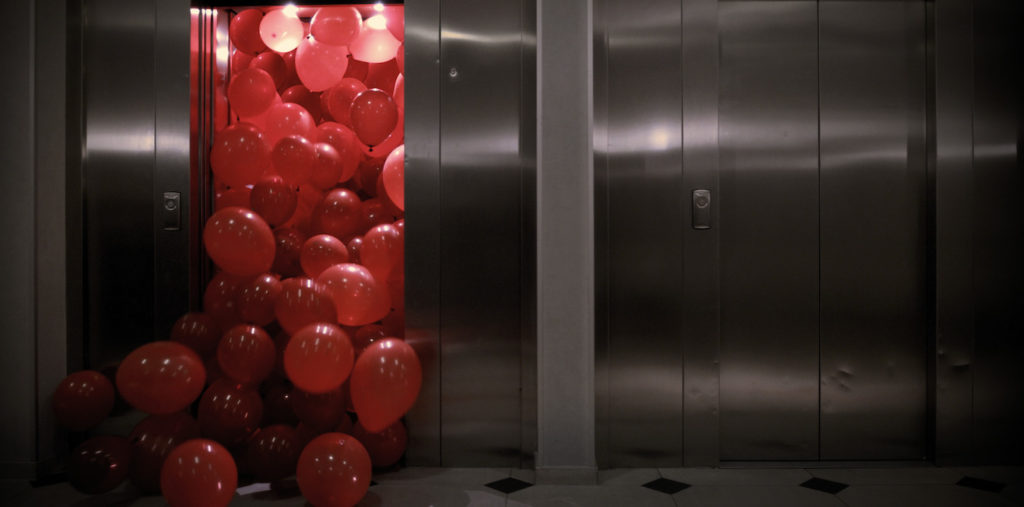
Synopsis : 1976, Brian de Palma directs Carrie, the first novel by Stephen King. Since, more than 50 directors adapted the master of horror’s books, in more than 80 films and series, making him now, the most adapted author still alive in the world . What’s so fascinating with him that the directors can’t stop adapt his books ? The feature documentary KING ON SCREEN reunites filmmakers that have adapted Stephen King’s books for cinema and TV. In the cast, more than 25 directors, including Frank Darabont (Shawshank Redemption, The Green Mile, The Walking Dead), Tom Holland (The Langoliers, Chucky), Mick Garris (The Stand, Sleepwalkers) and Taylor Hackford (Dolores Claiborne, Ray). It is a movie made for the fans and with the fans, led by an international ambition.

Q: There are tons of great movies based on Stephen King novels. Of his works that were turned into movies such as “Stand By Me” [1986], “The Shining” [1980], “The Shawshank Redemption” [1994], “The Green Mile” [1999], “Carrie” [1976], “Misery” [1990], “Pet Sematary” [1989] — which ones made you decide to tackle this film?
DB: I’ve always been a huge fan of Stephen King since I [was] a child. “The Green Mile” is my favorite film of all time. I really wanted to take a deeper look into the [various] directors’ point of view because I think it’s interesting since he is the most adapted author [of all time according to Google].
But we had to be quite balanced. We couldn’t talk about all the films that were made, so we had to make some choices. We didn’t want [this] to be an encyclopedia type of film. We had to choose some of the adaptations to talk [about] a bit more. It had been decided regarding the directors who were in it, to use what the directors had to say and how it could be connected to the whole story of the documentary.
It was fascinating to talk to those directors who [did] all those adaptations because they are grateful. As you say, “Stand By Me,” “Misery,” “The Green Mile,” “Shawshank” — it’s interesting to go a little bit deeper into their [creation].
Q: Frank Darabont took five years to write the screenplay for “The Shawshank Redemption.” Rob Reiner and Tom Cruise read the script, and even though Tom suggested that Rob direct it initially, they ended up giving it to Darabont. He hadn’t directed a feature film before that. Do you think he had a clearer vision of the story so it was given to him rather than to bigger names?
DB: Actually, King gave Frank the rights to “Shawshank” after he had seen the first short film that Darabont did [“The Woman in the Room,” 1984], which was an adaptation of King’s short story [1977]. It took Darabont five years to write the script because he wanted it to be so perfect. It’s only when he had written the script that he [wanted] to direct it even though Rob Reiner was interested in doing it.
At the time, “Shawshank” was Darabont’s first feature film, but he directed a TV movie [“Buried Alive”, 1990], and wrote a lot of scripts well before doing “Shawshank.” He was so sure about doing “Shawshank” because it’s something that he felt was essential for him. When you see that so many years after doing the movie he’s talking about this film with so much passion, you can totally understand why they said, “Yeah, okay, do it.” He was the right person to direct “Shawshank”, for sure.
Q: King’s wife Tabitha pulled the manuscript of “Carrie” out of the trash can, read his stories, and gave him fast, critical feedback. Some say many of the female characters are based on her. Could you talk about King’s relationship with his wife and her influence on his career?
DB: Yes, it’s something that we really wanted to have in the documentary. She had a great influence on his work at every level. She reads every book he’s writing — she’s the first reader. She’s the first one to review his work and give him feedback. It’s interesting because in a lot of ways, his relationship with Tabitha, the fact that he was raised by a single mother, had an impact on the female characters that he wrote. In his stories he writes amazing female characters, I think.

Q: It’s very well known that Stephen King didn’t like Stanley Kubrick’s version of “The Shining” for a number of reasons. One of the most important was that this was a really personal book to him. Many of the book’s readers detested Kubrick’s works initially [as well]. What did you think of King making a TV series of “The Shining” on his own? Was it just for his satisfaction?
DB: You are giving the rights to a filmmaker to adapt your story, which is your baby; it’s a very emotional bond that you have with what you create. I think the fact that he was not satisfied or happy with “The Shining” was his way, somehow, to repair something that was — well, the movie took liberties and directions that he wasn’t happy with. You can totally understanding’s point of view when he’s talking about the time that there were a lot of things that weren’t right.
Stephen King [truly made] a great adaptation of “The Shining” miniseries because it’s really close to the stories. You can totally feel that the character of Jack Torrance is losing himself into his madness. It’s a great format as well, to do it in a miniseries because it gives you time to explore the characters and their evolution. In the case of Jack Torrance in the film, when you have four hours to tell a story, it’s great because there you see something of the characters. It’s something that they managed to do very well in the miniseries.
Q: In 1999, King was hit by a van as he was walking along the [road] — a horrible accident that left him with multiple severe injuries. Yet he managed to get to the premiere of “The Green Mile” during his period of recuperation.
DB: The project of “The Green Mile” was very dear to him. I don’t want to speak for him, because I’m not in the best position to do it, but I think somehow the fact that when your story is translated to the screen — especially in the case of “The Green Mile” because it was also from Darabont, (who was such a good friend to King) — [you would] so much want to be at the premiere.
It’s a piece of art that’s really dear to King so it was important for him to be present at that premiere. It’s amazing to see how he’s recovered from the accident. After that, he continued to work on so many stories.
Q: The relationship between George Romero and Stephen King is fascinating. They worked together to combine humor and horror for “Creepshow” [the horror comedy anthology film, 1982]. What was amazing to you about their collaboration?
DB: Romero and King have a lot of things in common regarding their view of the world and how they saw horror as well. I think they had the same references because they were quite close, and we can feel that in “Creepshow” because it’s really a mix of their two universes. The fact that King himself played in “Creepshow” [illustrates] how much their collaboration on this film was. At first, they wanted to do something else together, and they finally decided to create something from scratch with “Creepshow.” It’s fascinating, It tells about who they are.

